TOILETS IN CHINA
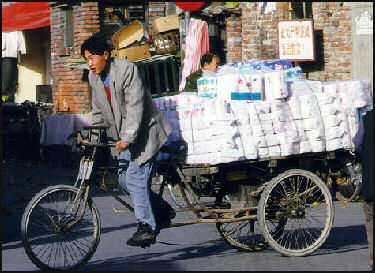
Toilet paper delivery
China claims to be the home of the first flush toilet. An ancient latrine was discovered on a Western Han Dynasty (200 B.C. to A.D. 24) tomb. The Chinese invented toilet paper in the 14th century. Despite this, The World Health Organization estimates that tens of millions of Chinese have no access to toilets and defecate in the open. A 2010 report estimated that 45 percent of Chinese lacked access to improved sanitation facilities that protect users from contact with excrement, contributing to the risk of disease. According to a United Nations report, half the world's people don't have access to a toilet or a clean latrine. People often relieve themselves in the bushes or in a field. Only 30 percent of the world uses toilet paper. Alternatives include hands, water, sand, small rocks, mud, leaves, rope and seaweed. [Source: Sharon LaFraniere, New York Times, February 29, 2012]
But China’s sanitation has improved drastically in the past 20 years and continues to get better. Riding a historic property boom, Chinese are now buying nearly 19 million toilets a year, about twice the number sold in the United States, according to industry estimates. Last November, China hosted the World Toilet Organization’s 11th World Toilet Summit and Expo on Hainan Island. The Chinese authorities there said that the island, a tourist spot, was in the midst of a — toilet revolution.”
A typical rural bathroom is a shed-like outhouse in back of the house with cinder blocks walls and a metal door and roof. The toilet more often than not it is a latrine or a hole in the ground surrounded by concrete. People squat instead of sit. If there is a flushing system it is more often than not a ladle and a bucket of water. Most guesthouses and hotels used by foreigners have Western style toilets.
Substandard plumbing and overloaded city sewers are problems in many places. Blockages are common, plumbing work can be shoddy, and pipes often are placed too close to floorboards. A well-known joke in China goes like this: If you need a bathroom, just follow your nose. Places with sewers often have no waste-water treatment facilities and sewage is dumped directly into water supplies from which people draw their water.
Many Asians consider squat-style Asian toilets to be more hygienic than Western toilets because no part of the body touches them. Studies have shown that people who use Asian-style squat toilets are less likely to get hemorrhoids than people who use Western-style toilets. David Pierson wrote in the Los Angeles Times: ‘squat toilet habits are hard to break in China, particularly among the older generation. Women's public restrooms commonly include signs asking visitors not to stand on the seats. The telltale sign it's too late? A set of footprints.”
See Separate Articles: HYGIENE IN CHINA: EAR CLEANING AND THE LAST BATHHOUSE IN BEIJING factsanddetails.com ; BAD MANNERS IN CHINA Factsanddetails.com/China ; HEALTH IN CHINA Factsanddetails.com/China ; Squat Toilet blog report banterist.com
RECOMMENDED BOOKS: “Hygiene, Sociality, and Culture in Contemporary Rural China: The Uncanny New Village” by Lili Lai Amazon.com; “Shanghai Hygiene, or, Hints for the Preservation of Health in China” by James Henderson Amazon.com; “Hygienic Modernity: Meanings of Health and Disease in Treaty-Port China” by Ruth Rogaski Amazon.com;
Pee and Turds in China
 <img
In a piece in The Guardian that struck some as being culturally insensitive, David Sedaris wrote: Another thing one notices in China is the turds. "Oh please," you're probably thinking. "Must you?" To this I answer, "Yes, I must", for if they didn't affect the food itself, they affected the way I thought about it. In Beijing, you see an overwhelming amount of shit. Some of it can be blamed on pets, but a lot of it comes from people. Chinese babies do without diapers, wearing instead these strange little pants with a slit in the rear. When a child has to go, its parents direct it towards the kerb or, if they're indoors, to a spot they think of as "kerby". "Last month I saw a kid shit in the produce aisle of our Chengdu Walmart," a young woman named Bridget told me. [Source: David Sedaris, The Guardian July 15, 2011]
<img
In a piece in The Guardian that struck some as being culturally insensitive, David Sedaris wrote: Another thing one notices in China is the turds. "Oh please," you're probably thinking. "Must you?" To this I answer, "Yes, I must", for if they didn't affect the food itself, they affected the way I thought about it. In Beijing, you see an overwhelming amount of shit. Some of it can be blamed on pets, but a lot of it comes from people. Chinese babies do without diapers, wearing instead these strange little pants with a slit in the rear. When a child has to go, its parents direct it towards the kerb or, if they're indoors, to a spot they think of as "kerby". "Last month I saw a kid shit in the produce aisle of our Chengdu Walmart," a young woman named Bridget told me. [Source: David Sedaris, The Guardian July 15, 2011]
There are the wild outdoor turds of China, and then there are the ones you see in the public bathrooms, most of which feature those squat-style toilets, holes, basically, level with the floor. And these bathrooms, my God. The sorriest American gas station cannot begin to match one of these things. In the men's room of a Beijing subway station, I watched a man walk past the urinal, lift his three-year-old son into the air and instruct him to pee into the sink — the one we were supposed to wash our hands in.
My trip reminded me that we are all just animals, that stuff comes out of every hole we have, no matter where we live or how much money we've got. On some level we all know this and manage, quite pleasantly, to shove it towards the back of our minds. In China, it's brought to the front, and nailed there. The supermarket cashier holds out your change and you take it thinking, "This woman squats and spits on the floor while shitting and blowing snot out of her nose." You think it of the cab driver, of the ticket taker and, finally, of the people who are cooking and serving your dinner.”
Public Toilets in China
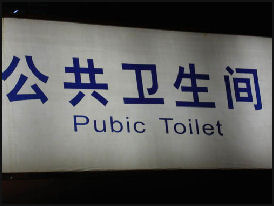 Millions of people in China don't have a toilet in their own home. Instead they use chamber pots which are taken to collection centers. Most public toilets have squat-style Asian toilets. Many rural Chinese are unfamiliar with Western toilets. It is not unusual to see footprints on the seat of a Western toilet from where somebody has stood and squatted.
Millions of people in China don't have a toilet in their own home. Instead they use chamber pots which are taken to collection centers. Most public toilets have squat-style Asian toilets. Many rural Chinese are unfamiliar with Western toilets. It is not unusual to see footprints on the seat of a Western toilet from where somebody has stood and squatted.
As a rule public rest rooms don't have toilet paper (for this reason always carry tissue with you). Toilet paper, or often newspapers, are supposed to be placed in a the wastebasket and not flushed so the plumbing system does get clogged. Many rest rooms are coed, with urinals in the front for men and separate toilets stalls behind closed doors for men and women.
Some public toilets are watched over by married couples, with the husband cleaning the men’s room and the wife cleaning the women’s room. Some have young children that also spend much of their time in the public toilet.
Dirty Public Toilets in China
The public toilets in China are regarded as among the world's worst. They are often dirty, smelly and disgusting and many non-Chinese find them "unusable." Some are out in open and people have to squat in full view of everyone; others have pigs eating the shit underneath them. Chinese writers complained about dirty toilets as far back as the 11th century B.C. and a popular saying these days is "finding a toilet is as hard as going to heaven."
Beijing especially is infamous for its disgusting public toilets. About a fifth of the complaints received the Beijing Consumer's Association are related to Beijing's public toilets. The ones in the hutongs have traditionally been used by entire neighborhoods and communities and stink to high heaven. eijing have offered large sums of money for better public toilet designs. Some hotels have signs in bathrooms that read: "Guest may not perform urination in sink basin."
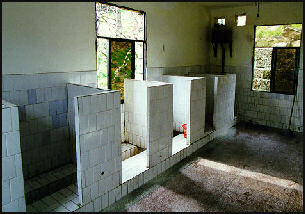 Shanghai, a city with 13 million people, has only 1,104 public toilets and Beijing, with 10 million people, has 6,800. In 1993, 70 percent of the population of Beijing used public toilets, today about 20 percent use them. Most of the waste from urban toilets ends up in tanks that are emptied by vans or men with wheelbarrows and ultimately sent to the countryside to be used as night soil (See Agriculture).
Shanghai, a city with 13 million people, has only 1,104 public toilets and Beijing, with 10 million people, has 6,800. In 1993, 70 percent of the population of Beijing used public toilets, today about 20 percent use them. Most of the waste from urban toilets ends up in tanks that are emptied by vans or men with wheelbarrows and ultimately sent to the countryside to be used as night soil (See Agriculture).
After the Communist closed down tea houses and cafes as being decadent, public toilets often served as meeting places in Beijing. It became common for people to socialize seated on toilets with no doors or partitions. The practice went along with Communist teachings for people to eschew secrets and share everything (See Society, Privacy). At some public toilets, Chinese pretend to squat and refuse to move unless they are given money.
Improving Toilets in China
After China lost its bid to host the Olympics in 2000, the country went through a phase of soul searching to determine how to improve China and improving toilets was at the top of the list. Part of Beijing’s effort to win the 2008 Olympics included renovating 452 public toilets in 305 tourist sites and ranking them from zero to four stars. When the program was launched the China Daily ran the headline: “Capital Flushes Out Low Standard Loos.”
The toilets were ranked on the basis of 58 qualifications. Those that received four stars were clean and well lit as you might expect but also boasted things like granite floors, cheerful music and automatic flushing toilets. The one outside the Peking Man complex was given high marks. It featured blow dryers that users could use to blow the dust off their skin after visiting the site. The one outside a popular section of the Great Wall was designed by a famous Taiwanese architect. One in Hangzhou featured bamboo walls and wooden seats and was dubbed “Oneness of Being.”
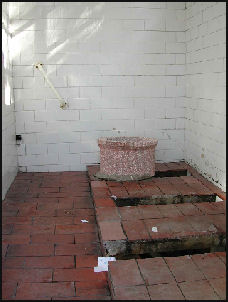 Some advanced toilets have climate control and television sets and have been designed to look like space ships. Some new ones have infra-red-activated flushing toilets and signs in Chinese, English and braille that list rules like “Each user is entitled to one free piece of common toilet paper (length centimeters, width 10 centimeters).
Some advanced toilets have climate control and television sets and have been designed to look like space ships. Some new ones have infra-red-activated flushing toilets and signs in Chinese, English and braille that list rules like “Each user is entitled to one free piece of common toilet paper (length centimeters, width 10 centimeters).
As of 2005, the Beijing government had spent $29 million fixing up 14,500 toilets. Many hutong residents used to using communal toilet thought the whole thing was a big waste of money. Other have established clubs associated with them. Beijing wasn’t the only city bent on improving it toilets. The city of Chongqing experimented with outdoor toilets for males that have walls equipped with a waist-level screens that hide the vital parts of user.
In 2004, Beijing hosted the World Toilet Summit. It attracted 150 academics, sanitation experts, toilet designers and environmentalists from 19 countries, including Finland, Germany, Japan, Nepal and the United States. It also used the event as an opportunity to showcase its new toilets.
Beijing Imposes Two-fly Rule on Public Toilets
In May 2012, Leo Lewis wrote in The Times: “China's draconian 'one-child' policy is well known. But now a new code has come into effect: a two-fly rule now governs public toilets across Beijing. The edict was issued to cleaners across the capital. The Working Standard of Beijing Major Industries' Public Toilet Management is designed to bring much-needed improvements to public hygiene and cleanliness in the city's 12,000 public lavatories. [Source: Leo Lewis, The Times, May 24, 2012]
“Central to the campaign is ensuring that the number of flies in each facility is never allowed to exceed two. The rules offer no suggestions on how to achieve the exacting standard or how to measure the fly population. The two-fly rule does not specify whether the quota refers to living or dead specimens, or whether to count a fly that, after entering, shows no sign of wishing to prolong the visit. One Beijing toilet cleaner, who gave her name as Wang, said that the rules were vague on what to do if the fly count was precisely two: "Are we obliged to destroy the surviving two, or leave them be?"
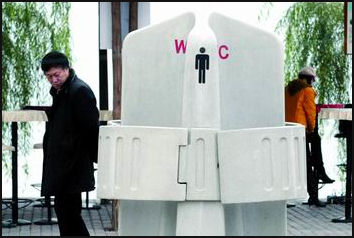 Despite the demands of the rule, officials at the Beijing Municipal Commission of City Administration and Environment said that they were designed to "lead public toilets in a better direction" and indicated that enforcement would not be as rigorous as many toilet cleaners might fear. "We will not actually count fly numbers," said Xie Guomin, an official at the municipal commission. "The regulation is specific and quantified, but the inspection methodology will be flexible.”
Despite the demands of the rule, officials at the Beijing Municipal Commission of City Administration and Environment said that they were designed to "lead public toilets in a better direction" and indicated that enforcement would not be as rigorous as many toilet cleaners might fear. "We will not actually count fly numbers," said Xie Guomin, an official at the municipal commission. "The regulation is specific and quantified, but the inspection methodology will be flexible.”
“Toilet-cleaning professionals in several facilities pointed out that the rule had not been accompanied by budgetary changes that would allow them to purchase, for example, a fly swat. Cleaners at toilets in Ritan Park said that they tended to operate a three-fly rule. Only one fly was visible during a brief interview. The new rules demand that the smell of each public toilet should be rated on a six-tier scale, from odourless to unbearable. Seats - if the lavatories are not the more common squat variety - should have no dust, surface water, litter, or, in the winter, ice
Shortage of Women's Toilets in China
Sharon LaFraniere wrote in the New York Times, “Wang Jianyi, 26, was in a huge hurry. She had been riding the bus for three hours. At each rest stop, the line outside the women’s toilet was too long for her to use the restroom. So as soon as she arrived at a major inter-city bus terminal in Beijing on Monday morning, she made a beeline for the nearest public restroom. Only to encounter yet another line. “I have been holding my pee for an hour,” she said in frustration as she waited for a women’s stall while a few feet away, men sauntered in and out without delay. “I think there should definitely be more stalls for women, because women take longer.”[Source: Sharon LaFraniere, New York Times, February 29, 2012]
At least twice as long, studies suggest. Despite that, national standards for public street toilets in urban China recommend a one-to-one ratio of men’s stalls, including urinals, to women’s stalls. Since sanitation workers — almost uniformly women — routinely take over at least one women’s stall for their cleaning supplies, women typically end up with even less opportunity to relieve themselves.
China’s 1:1 ratio for men’s to women’s street toilets, spelled out in national standards in 2005, is less favorable to women than either Taiwan’s or Hong Kong’s. Taiwan recommends a 1:3 ratio for public toilets, while Hong Kong recommends a ratio of 2:3. China adopts Hong Kong’s ratio only in certain public structures like shopping malls, presumably in recognition of the fact that women are bigger shoppers.
It is not, some would argue, the most compelling public issue that confronts China at the moment. But it is nonetheless one that Li Tingting, 22, a public management student in Shanxi Province, wants China to address. And that has thrust her into the strange, unpredictable world of Chinese citizen activists, who press for change within narrow, shadowy boundaries, never knowing if government authorities will brook them or slap them down.
Occupy Men’s Toilets Movement in China
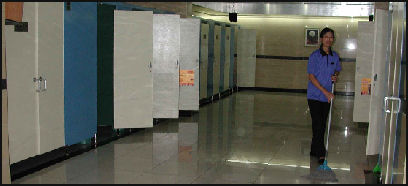
Five star public toilet Sharon LaFraniere wrote in the New York Times, “Ms. Li’s tactics are rather avant-garde for China: A little more than a week ago, in the southern Chinese city of Guangzhou, she and half a dozen other activists commandeered the men’s stalls at a busy public restroom near a park. For three-minute intervals, they warded off the men and invited the women to shorten their waits by using the vacated men’s stalls. Then they waved the men back in for 10 minutes. [Source: Sharon LaFraniere, New York Times, February 29, 2012]
The operation, dubbed “Occupy Men’s Toilets,” ended after an hour with, according to Ms. Li, greater public awareness and no trouble. The local government noted a few days later that since last March, the ratio of men’s stalls to women’s in all new or renovated public restrooms in Guangzhou had been set at 1:1.5. Xinhua, China’s official news agency, reported that the city responded promptly to the activists’ demands. But that is Guangzhou, long considered a comparatively liberal city. Here in ultra-security-conscious Beijing, street antics are not taken so lightly. When Ms. Li and a few other activists tried to occupy the men’s toilets one Sunday morning at the public restroom in Beijing near the Deshengmen long-distance bus terminal, they were greeted by 10 officers and three police vehicles. The officers told Ms. Li that without a permit, she and her fellow activists must leave, taking their colorful poster and pink leaflets with them.
The little troupe headed to another restroom, only to be greeted by more police officers, who videotaped Ms. Li as she talked to reporters about why women need more toilets. Once the reporters departed, Ms. Li said, the police forced her and a friend to spend the next five hours sitting in a nearby restaurant, lest they dare try to occupy another bathroom. Chinese officials want to appear to be benign authorities who are in touch with the needs and wants of the grass roots, not overseers of police squads who detain harmless university students seeking better bathrooms. So that is how the English-language version of the state-run China Daily presented the event.
“Toilet occupation group is flushed with success,” read Monday’s front-page headline. “Women demanding more public facilities make their voice heard.” No mention was made of the firm-handed police intervention. The story made it appear as if all went off without a hitch. Guo Jianmei, director of the Women’s Legal Consultancy Center in Beijing, said the street performances of Ms. Li and her friends had highlighted the problem of potty parity, as it is sometimes known, and forced officials to unearth oft-disregarded regulations. She said she hoped China’s national legislators took heed.
China’s Toilet Revolution
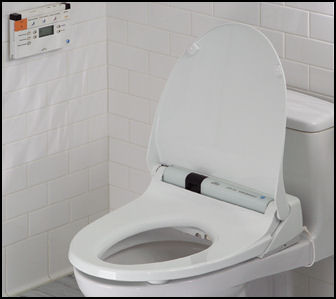
It has been said that China is undergoing a "toilet revolution" as it attempts to upgrade its public facilities. Associated Press reported: Bathrooms at tourist sites, notorious for their primitive conditions and nasty odors, are a special focus of the campaign, a response to a vast expansion in domestic travel and demands for better-quality facilities from a more affluent public. "Today in China, people are highly enthusiastic about tourism, and we have entered a new era of public tourism, " said Zhan Dongmei, a researcher with the China Tourism Academy. "The expectation of the public for the toilet is becoming higher." [Source: Associated Press, April 4, 2017]
“Launched in 2015, the revolution calls for at least 34,000 new public bathrooms to be constructed in Beijing and 23,000 renovated by the end of this year. Authorities are also encouraging the installation of Western-style sit-down commodes rather than the more common squat toilets. Around 25 billion yuan (US$3.6 billion) has already been spent on the program, according to the National Tourism Administration. The ultimate target, Zhan said, "is to have a sufficient amount of toilets which are clean and odorless and free to use."
“At Happy Valley, the largest amusement park in Beijing, around 4 million annual visitors rely on 18 bathrooms, each of which is assigned one or two cleaners who must make their rounds every 10 minutes on busy days. "People come here to have fun, but if the toilets are disgusting, how can they have a good time here?" said Vice General Manager Li Xiangyang. "It is the least we should do to offer a clean and tidy environment for tourists to enjoy both the tour of the park and the experience of using our toilets."
China Uses Facial Recognition System to Stop Toilet Paper Theft
Beijing's 600-year-old Temple of Heaven had a problem with people stealing toilet paper from its public bathrooms. Its solution: installing facial recognition technology that dispenses just one 60-centimeter section of paper every nine minutes following a face scan. "People take away the paper mostly because they are worried they can't find any when they want to use it the next time. But if we can provide it in every toilet, most people will not do it any more, " Mr Zhan said.
Neil Connor wrote in The Telegraph: “China has moved to wipe-out the theft of loo-roll by installing facial-recognition cameras in one of its busiest toilets. After meting out the loo roll, the software will deny the same person paper within nine minutes of their first scan, reports said. Authorities acted after a growing number of visitors to public toilets in China have raided the dispensers and taken the paper back home for daily use. “Some people still lack paper use manners, ” said a report by China Radio International (CRI). [Source: Neil Connor, The Telegraph, March 20, 2017]
“CRI cited a toilet attendant saying: “Some people take much more paper than needed and sometimes even take a whole roll away with them. "Sometimes paper is used up in only twenty minutes.” Toilet paper use at one of the park’s public toilets has dropped from 20 to four rolls within three days, reports said.
“However, the new toilet dispensers have already drawn complaints that they don’t work. Concerns have also made that the waiting time of 30 seconds might cause problems for those in an urgent situation. A toilet-user told the Beijing Evening News.“If someone is in an emergency but the machine is broken and there is no one around to help, it could be very awkward and troublesome."
“Meanwhile, the subject was being widely discussed on Sina Weibo, China’s version of Twitter. “I can’t believe people who steal the toilet paper could be living in an apartment worth millions of yuan, ” said one comment. “I am a bit uncomfortable about being watched in such places, ” said another. CRI said a trial of the dispensers will last for about two weeks, while other reports said they will be piloted for six months.“Other parks in the Chinese capital have installed automated toilet paper dispensers. Authorities have also ran a promotional campaign to get to the bottom of toilet paper theft.
Chinese Snapping Up High-Tech Toilets
David Pierson wrote in the Los Angeles Times: “Like Goldilocks searching for the perfect perch, Dong Yu tested one seat after another in the glitzy showroom. Some were too pricey, others too fussy. Then he found one that was just right. "You've got to try this," he shouted to his wife, to the delight of a fawning saleswoman. "This one's really comfortable." The seat in question was a $400 toilet made by Japan-based Toto Ltd. Dong and his wife had just bought a 2,200-square-foot apartment in a tony section of China's capital and were prepared to splurge on a pair of eye-catching commodes. This model, with its slim tank and ultra-quiet flush, was exactly what the couple were looking for.[Source: David Pierson, Los Angeles Times October 21, 2010]
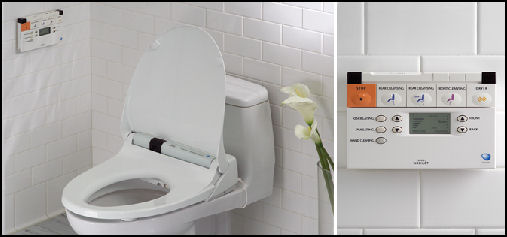
“China's housing boom has unleashed a bull market in fancy plumbing, a surge that underscores the desire of millions of Chinese to enjoy a better standard of living,” Pierson wrote. “No longer content with low-tech latrines, upwardly mobile Chinese are snapping up cutting-edge toilets loaded with high-efficiency flushing systems, heated seats and built-in bidets. "Today, Chinese people like to focus on the kitchen and the bathroom in their new apartments," Dong, 37, told the Los Angeles Times. "It's a big difference from when I was a kid. We had to share public bathrooms, which only had squat toilets."
“Although many are satisfied with Western-style toilets that often cost no more than $20 here, pricier name brands are gaining traction. Models costing anywhere from $150 to $6,000 now account for about 5 per cent of the toilets sold in China each year, according to Toto officials. The Japanese company has been riding robust growth here, peddling commodes with sleek designs and features such as oscillating bidets, air fresheners and blow dryers.”
"As far as toilets go, we think this is top of the line," Banse Katsuya, project sales manager for Toto China, told the Los Angeles Times, standing proudly over a $5,900 Neorest series bowl in the company's flagship store in Beijing. Outfitted with buttons labeled "rear cleansing" and "front cleansing" (and it's not referring to the bowl), the Space Age device features a heated seat and a water-saving, but powerful, hands-free sensor flush. The technology is nothing new in Japan, where units with built-in bidets, known as washlets, are commonplace even in public restrooms. But in China, the nouveaux riches have only recently begun to accept bells and whistles with their thrones.
Zhang Li, a 36-year-old real estate agent who grew up in one of Beijing's old courtyard neighborhoods where the odor of the public bathrooms was never far away, the told the Los Angeles Times has no regrets about stocking her luxury apartment with the latest and fanciest toilets. "I think we've earned the right to have clean, nice bathrooms," she said.
In February 2015, Jiji Press reported: “Japan has become a popular place for Chinese people to spend their week-long Lunar New Year holidays partly thanks to a weak yen. The Beijing Youth Daily published an article titled: Why Chinese consumers scramble to get Japanese warm-water-shower toilet seats. The article said that toilet seats with deodorization, washing and sterilization functions have become must-buys for Chinese tourists to Japan, next only to rice cookers, with those priced at around 2,000 yuan selling especially well. [Source: Jiji Press, February 20, 2015 ^|^]
“The People’s Daily, the Chinese Communist Party’s official newspaper, recently ran an article asking why Chinese tourists buy toilet seats in Japan even though similar products are available in their home country. Noting that Chinese people are not satisfied with domestic products, the article said Chinese-made products may draw popularity in the near future if controls over forgery are tightened and innovations are constantly promoted. ^|^
Foreign Companies Seek Their Share of China’s High-Tech Toilet Market
The surge for high-tech toilets has been a bonanza for plumbing manufacturers, which are vying for a piece of the world's largest loo market. Nearly 19 million toilets are sold in China annually, about double the number sold in the U.S., said Victor Post, vice president of BRG Consult, a global building products consultancy. "China is the most competitive market in the world," said Larry Yuen, president of Kohler Asia, which has 11 factories in China. "There are brands from Japan, Europe and America all fighting for market share." [Source: David Pierson, Los Angeles Times October 21, 2010]
"Our goal is to make these kinds of functionalities basic for everyone," Takahiro Yanagihara, director of Toto China told the Los Angeles Times. Toto operates nine factories in the country and whose sales have risen 10 per cent every year for the past decade. "We believe demand will continue to grow as urbanization continues to grow. People have more money to spend, and they want to be comfortable."
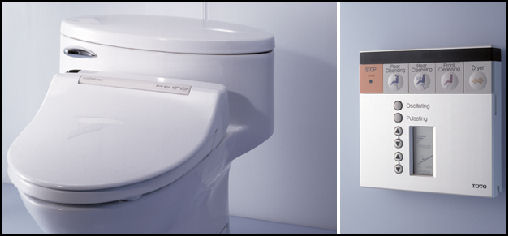
Toto has increased its Chinese marketing budget in recent years, Yanagihara said. It appears to be working. He said the company's washlet sales in China have tripled since 2004. In one television spot broadcast here, an actress touts the product by saying, "It's just like a spa." Then, using computer-generated animation that's short on subtlety, the commercial demonstrates how the bidet function works.
American Standard, whose operations in Asia are owned by a Japanese conglomerate, is also trying to educate Chinese consumers. In a multistory bathroom supply store in Beijing, company saleswoman Zhang Min showed off a $3,800 Eurozen model, which had pride of place on a glass pedestal. Her frank pitch focused on human plumbing. "We're targeting the younger generation. They're more aware of hygiene," Zhang said. "Though I keep telling older people that the bidet helps with constipation."
Across town, rival Kohler Co. of Wisconsin displays its elegantly designed bowls in a recently renovated showroom. One had a decorative gold band across its tank, another didn't have a tank at all. Opening the lid required just a nudge with a fingertip; a mechanism did the rest. Price tag: $5,000. Yuen, theAsia president of the company said the manufacturer is benefiting from younger Chinese unafraid to show off their wealth. He said consumers here have a special affinity for the bathroom. "It's the only place in your home you can have privacy," he said. "A lot of people still live with their grandparents and parents."
To better suit the Chinese market, some Kohler toilets are made a few inches shorter than in the U.S. And in a nation where nearly 1 in 4 residents smoke, Kohler salespeople in China often brag that their flushing system is powerful enough to suck down all the remnants of an emptied ashtray. "We've done this demonstration over and over," said Eric Sun, a company official. biggest challenge is installation," Yuen said. "It's why we're promoting and working with certified Kohler plumbers. There's just a lot of ignorance and second-rate piping out there."
Image Sources: Julie Chao except toilet paper delivery, Perrechon, and poster, Landsberger Posters http://www.iisg.nl/~landsberger/ : Toto Japan; Asia Obscura
Text Sources: New York Times, Washington Post, Los Angeles Times, Times of London, National Geographic, The New Yorker, Time, Newsweek, Reuters, AP, Lonely Planet Guides, Compton’s Encyclopedia and various books and other publications.
Last updated October 2021
